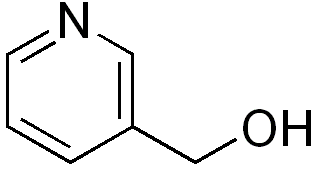
A broad-spectrum antibiotic is an antibiotic that acts on the two major bacterial groups, Gram-positive and Gram-negative, or any antibiotic that acts against a wide range of disease-causing bacteria. These medications are used when a bacterial infection is suspected but the group of bacteria is unknown or when infection with multiple groups of bacteria is suspected. This is in contrast to a narrow-spectrum antibiotic, which is effective against only a specific group of bacteria. Although powerful, broad-spectrum antibiotics pose specific risks, particularly the disruption of native, normal bacteria and the development of antimicrobial resistance. An example of a commonly used broad-spectrum antibiotic is ampicillin.

JAMA: The Journal of the American Medical Association is a peer-reviewed medical journal published 48 times a year by the American Medical Association. It publishes original research, reviews, and editorials covering all aspects of biomedicine. The journal was established in 1883 with Nathan Smith Davis as the founding editor. The journal's editor-in-chief is Howard Bauchner of Boston University, who succeeded Catherine DeAngelis on July 1, 2011. Due to JAMA deputy editor Ed Livingston downplaying the existence of racism in medicine on a JAMA Network podcast, Bauchner has been placed on administrative leave since March 25, 2021 while his role in the publishing of the comments is investigated.

John Franklin Enders was an American biomedical scientist and Nobel Laureate. Enders has been called "The Father of Modern Vaccines."
James Bryan Herrick was an American physician and professor of medicine who practiced and taught in Chicago. He is credited with the description of sickle-cell disease and was one of the first physicians to describe the symptoms of myocardial infarction.

Reserpine is a drug that is used for the treatment of high blood pressure, usually in combination with a thiazide diuretic or vasodilator. Large clinical trials have shown that combined treatment with reserpine plus a thiazide diuretic reduces mortality of people with hypertension. Although the use of reserpine as a solo drug has declined since it was first approved by the FDA in 1955, a review recommends use of reserpine and a thiazide diuretic or vasodilator in patients who do not achieve adequate lowering of blood pressure with first-line drug treatment alone. The reserpine-hydrochlorothiazide combo pill was the 17th most commonly prescribed of the 43 combination antihypertensive pills available In 2012.

Metanephrine (metadrenaline) is a metabolite of epinephrine (adrenaline) created by action of catechol-O-methyl transferase on epinephrine. An article in the Journal of the American Medical Association, 2002, indicated that the measurement of plasma free levels of the metanephrines group of molecules is the best tool in the diagnosis of pheochromocytoma, an adrenal medullary neoplasm.
George D. Lundberg, MD is an American board-certified pathologist and writer.

Pargyline (brand name Eutonyl) is an irreversible selective monoamine oxidase (MAO)-B inhibitor drug (IC50 for MAO-A is 0.01152 μmol/L and for MAO-B is 0.00820 μmol/L) It was brought to market in the US and the UK by Abbott in 1963 as an antihypertensive drug branded "Eutonyl". It was one of several MAO inhibitors introduced in the 1960s including nialamide, isocarboxazid, phenelzine, and tranylcypromine. By 2007 the drug was discontinued and as of 2014 there were no generic versions available in the US. In addition to its actions as an MAOI, pargyline has been found to bind with high affinity to the I2 imidazoline receptor (an allosteric site on the MAO enzyme).
DailyMed is a website operated by the U.S. National Library of Medicine (NLM) to publish up-to-date and accurate drug labels to health care providers and the general public. The contents of DailyMed is provided and updated daily by the U.S. Food and Drug Administration (FDA). The FDA in turn collects this information from the pharmaceutical industry.

Nicotinyl alcohol (pyridylcarbinol) is a niacin derivative used as a hypolipidemic agent and as a vasodilator. It causes flushing and may decrease blood pressure.

Flurothyl (Indoklon) is a volatile liquid drug from the halogenated ether family, related to inhaled anaesthetic agents such as diethyl ether, but having the opposite effects, acting as a stimulant and convulsant. A clear and stable liquid, it has a mild ethereal odor whose vapors are non-flammable. It is excreted from the body by the lungs in an unchanged state.

Butaperazine is a typical antipsychotic of the phenothiazine class.

Pirnabine (SP-304) is a synthetic cannabinoid receptor ligand, which was developed for the treatment of glaucoma.
A medical journal is a peer-reviewed scientific journal that communicates medical information to physicians and other health professionals. Journals that cover many medical specialties are sometimes called general medical journals.

A heart transplant, or a cardiac transplant, is a surgical transplant procedure performed on patients with end-stage heart failure or severe coronary artery disease when other medical or surgical treatments have failed. As of 2018, the most common procedure is to take a functioning heart, with or without both lungs, from a recently deceased organ donor and implant it into the patient. The patient's own heart is either removed and replaced with the donor heart or, much less commonly, the recipient's diseased heart is left in place to support the donor heart.

Mytatrienediol, also known as 16α-methyl-16β-epiestriol 3-methyl ether or 16β-hydroxy-16α-methylestradiol 3-methyl ether, is a synthetic steroidal estrogen medication and an estrogen ether which was derived from estriol and was developed for clinical use in the late 1950s but was never marketed. It was investigated as a weak and mildly estrogenic medication for men to treat atherosclerosis, improve serum lipid profiles, and reduce the risk of myocardial infarction. However, while preclinical research supported the profile of mytatriendiol as a weak estrogen, the medication was found in clinical trials to produce estrogenic side effects including feminization, breast pain, and gynecomastia in men similarly and comparably to other estrogens such as ethinylestradiol and conjugated estrogens, and its side effects ultimately precluded its use. The medication was also studied to treat bone pain in patients with multiple myeloma, metastatic bone disease, and osteoporosis, with effectiveness seen.

Estrogenic substances, also referred to as natural estrogens and sold under the brand name Amniotin among others, is an estrogen medication which was marketed in the 1930s and 1940s and is no longer available. It was a purified extract of animal material such as horse urine, placenta, and/or amniotic fluid, and contained a non-crystalline mixture of estrogens, including estrone, 17β-estradiol, 17α-estradiol, and/or equilin. The medication was thought to contain estrone as its major active ingredient and was described as an estrone-like preparation, or as "essentially estrone". Estrogenic substances was originally produced from the urine of pregnant women, placenta, and/or amniotic fluid, but by the early 1940s, it was manufactured exclusively from the urine of stallions or pregnant mares, similarly to almost all other estrogen preparations on the market.

Eric James Trimmer was an English general practitioner and medical writer.

WIBP-CorV is one of two inactivated virus COVID-19 vaccines developed by Sinopharm. Peer-reviewed results show WIBP-CorV 72.8% effective against symptomatic cases and 100% against severe cases. The other inactivated virus COVID-19 vaccine developed by Sinopharm is BBIBP-CorV which is comparably more successful.















